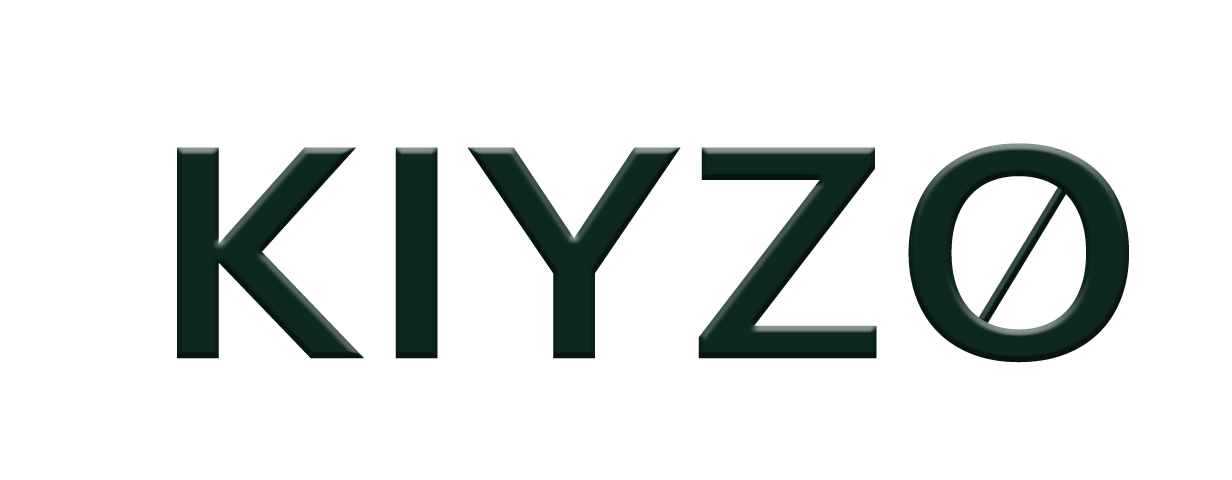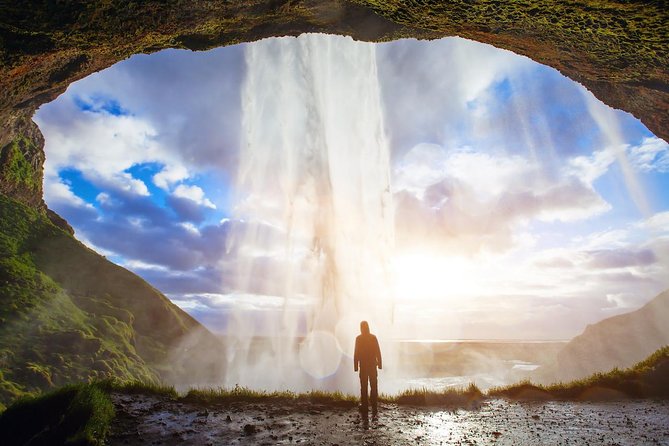Experience the natural wonder of south coast Iceland. See the magnificent waterfalls of Seljalandsfoss and Skógafoss, the black-sand beaches of Reynisfjara, and the breathtaking Sólheimajökull glacier.
Tour tips
- -Be ready for early morning departure. Climb into a comfortable tour vehicle and depart the city.
- Do wear supportive footwear and waterproof s as you won’t want to miss a moment
- This may be hard with small children due to the time in the van and the subject matter of the information.
- Trip is quite long (about 11 hours), but worth it
- After hotel pickup in Reykjavík in the morning, board your Mercedes Benz Sprinter—a luxury minibus equipped with complimentary Wi-Fi. Meet your experienced guide who shares information about each location you visit during this full-day itinerary along Iceland’s stunning south coast.
- The tour also includes a stop for lunch before drop-off back at your hotel.
Skógafoss is one of the most beautiful and tallest waterfalls in Iceland, with a drop of some 60 meters and a width of 25 meters, and you can walk right up to, but be prepared to be drenched. It is just overwhelming standing next to it There is a staircase leading to a viewing platform for the waterfall and surrounding areas. The platform gives you an expansive view of the south coast, Eyjafjallajökull and Skógafoss. NOTE: the restrooms are behind a paywall and entry costs ISK 200 / USD 2.
Brief history
There is a legend of an early Viking settler named Þrasi (Thrasi) Þórólfsson. Þrasi was an educated man who had some wealth to his name. According to the legend, before Þrasi died in 900 AD, he hid gold within a chest and placed it in a cave behind Skógafoss. Other stories say that Þrasi threw the chest into the pool beneath the waterfall. It is said that on a very sunny day, the base of the waterfall will shimmer gold. Unfortunately, I have yet to hear about in encounters of this legendary phenomenon.
While we don’t know for sure if there is gold at Skógafoss, it has enticed many over the years. According to another local legend, a young boy almost succeeded. He claimed to have found the treasure chest but failed to retrieve it. However, he didn’t come away empty-handed. He tied a rope the ring on the side of the chest, but when he pulled, the ring came off. The boy then donated the gold ring to the Skógar Church. To give the story credibility, visitors today can see this same ring at the Skógar Folk Museum.
The lustrous glacier lagoons filled with icebergs offers an eye-captivating site to individuals who love to travel in the winter wilderness. The picturesque site caters to the interest of almost every hiker, explorer, trekker, and adventure enthusiast. Most of these glaciers have a lake with icebergs at the base of the glacial outlet. The nation has approximately eleven percent of the surface covered with ice, which interests many onlookers. Some of the majestic glacier lagoons include the iconic and renowned
Brief history
he first glacier lagoon began to form in Iceland about 10,000 years ago, which marks the end of the last ice age. The glacier lagoons are lakes that form at the base of a glacier or the glacial outlet. In the simplest form, it is defined as a lake with vast chunks of melted ices from a gigantic mountain or glacier. The increasing number of these mystical and magical blue glacier lagoons in Iceland interest tourists and explorer and offers a lot of opportunities to enjoy and seek them out.
These naturally crafted lakes are notable for their coloration, which is due to the sediment-filled in the glacier ice. Undoubtedly, it is a beautiful and picturesque sight to enjoy, but it is the outcome of a dramatic and concerning climate effect. There have been places or sites like Langjokull in Iceland with glacier lagoons that are expected to disappear in the coming 150 years. Another renowned and eye-captivating glacier lagoon site is the Jokulsarlon, which is the classic example of the alarming climate change. Until 1935, there were no signs of the formation of the gigantic glacier lagoon, but with a radical rise in the temperature, the glacier started to melt and settled as a lake at the base.
The famous waterfall one you can walk behind. Be careful you might get wet 🙂 This unique waterfall flows from the infamous glacier Eyjafjallajökull, the molten-syllables-which nobody can pronounce good for nothing volcanic glacier that stopped all the air traffic over the North-Atlantic back in 2010. At Seljalandsfoss there are restrooms, a food stall and a small gift shop. The restrooms are free of charge.
A unique waterfall in the river Seljalandsá, about 30 km west of Skógar: it is 60 meters high with a footpath behind it at the bottom of the cliff, but with a thin cascade. It is the only known waterfall of its kind where it is possible to walk behind it. The waterfall is very picturesque; therefore, its photo can be found in many books and calendars.
brief history
Seljalandsfoss is located in the South Region in Iceland right by Route 1 and the road that leads to Þórsmörk Road 249. The waterfall drops 60 m (197 ft) and is part of the Seljalands River that has its origin in the volcano glacier Eyjafjallajökull.
it’s one of the few waterfalls in Iceland that you can walk behind. Thanks to the water’s impressive power, over thousands of years the water has dug out a great bowl in the rock below, with the top of the cliff extending out above it
Sólheimajökull is a glacier tongue, an offshoot off of the main body of Mýrdalsjökull glacier. We walk towards Sólheimajökull, through the valley it has carved out of the mountain scape and along the glacier river it forms at its base. The valley is a chaotic collection of rocks, gravel and sand which the tongue ground down as it passed over the land. The glacier is unlike others as it is striped with layers of ash crushed between seasonal layers of ice, but the glacier is surrounded by multiple active volcanic stations. NOTE: the restrooms are behind a paywall and entry costs ISK 300 / USD 2.5, they accept credit cards.
Brief history
Solheimajokull is one of the most monitored glaciers in the world, with records dating back to the 1930s. Since the mid-1990s, the glacier has retreated by up to 50m a year, creating a huge lagoon at its snout and revealing an amazing landscape featuring distinctive landforms such as lateral moraines, kettle holes and an extensive outwash plain. As with other glaciers in Iceland and across the world, scientists believe this retreat to be clear evidence of climate change and global warming. Through interviews with local experts (including glaciologist Thorsteinn Thorsteinsson), this film makes a critical assessment of the recent trends and examines the links to global warming, whilst clear diagrams, photos and video clips explain the formation of this unique landscape, focusing particularly on glacial processes and glacial landforms.
The Black Sand Beach, is truly a natural marvel. The site offers beautiful basalt columns, a natural arc viewed from afar, troll-like sea stacks and during the summer season there are thousands of puffins which make the cliffs of the Black Sand Beach their home. Visitors often call it ‘The Diamond Beach‘ because the glaciers from Jokulsarlon lie on the sand and sparkle like diamonds.
This stunning black sand beach along the South Coast of Iceland is located beside the small fishing village of Vik i Myrdal. It’s known for its dramatic natural landscapes: hexagonal basalt columns, the Halsanefshellir Sea Cave, and large rock formations that rise out of the sea.
Brief history
situated under the mountain Reynisfjall [ˈreiːnɪsˌfjatl̥] near the village Vík í Mýrdal in southern Iceland. It is framed by a black sand beach [1] that was ranked in 1991 as one of the ten most beautiful non-tropical beaches in the world.[2] In 2021 Reynisfjara [ˈreiːnɪsˌfjaːra] was rated the 6th best beach in the world.[3]
Legend says that the stacks originated when two trolls dragged a three-masted ship to land unsuccessfully and when daylight broke they became needles of rock.
Contemporary legends note the story of a husband who found his wife taken by the two trolls, frozen at night. The husband made the two trolls swear to never kill anyone ever again. His wife was the love of his life, whose free spirit he was unable to provide a home for; she found her fate out among the trolls, rocks, and sea at Reynisfjara.

